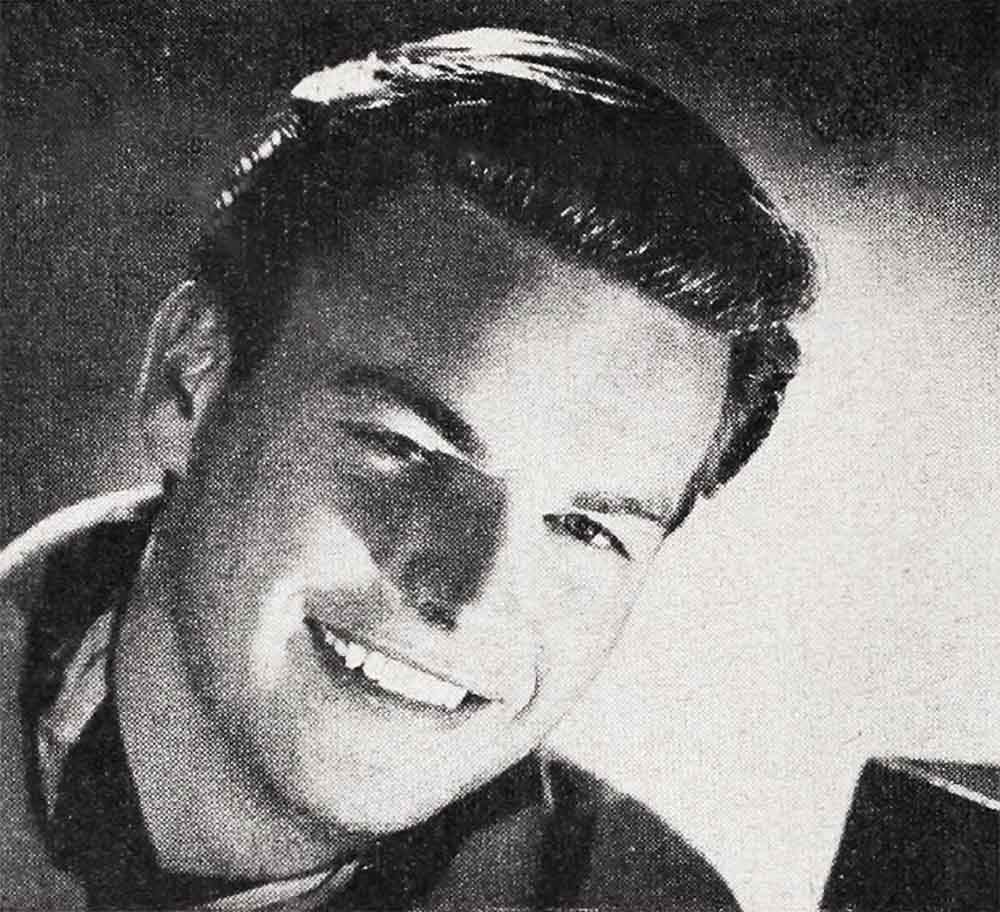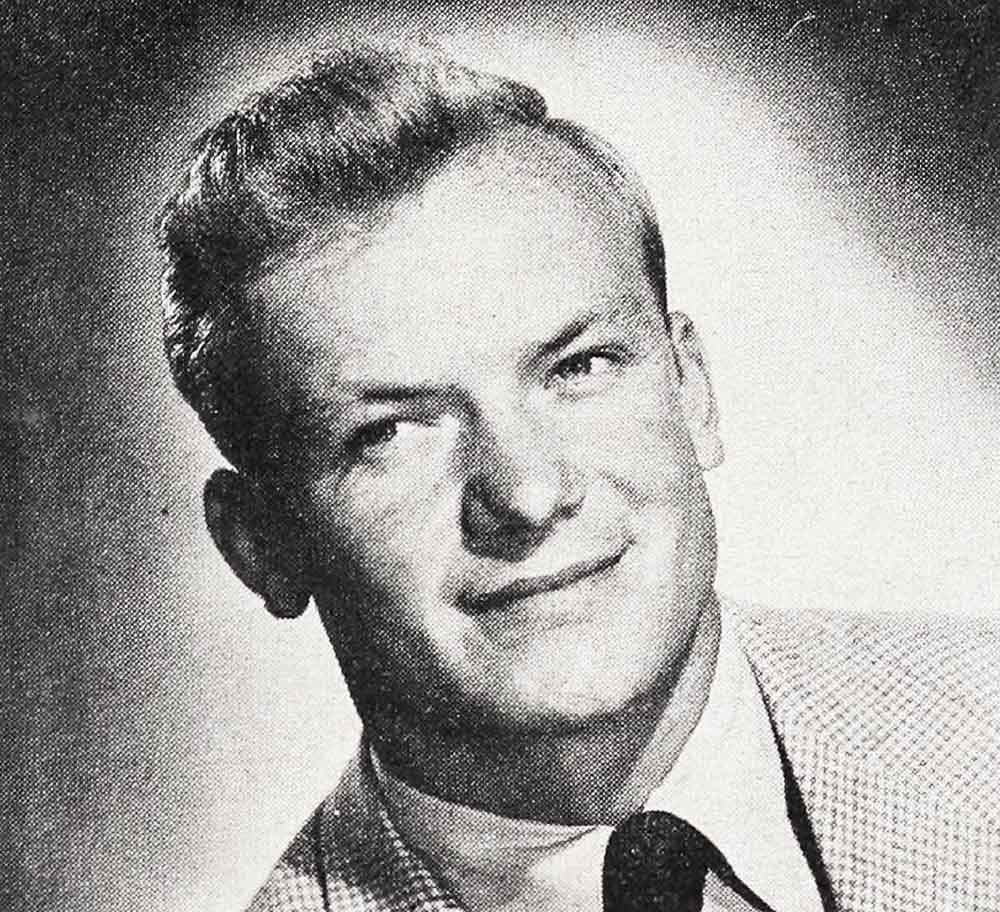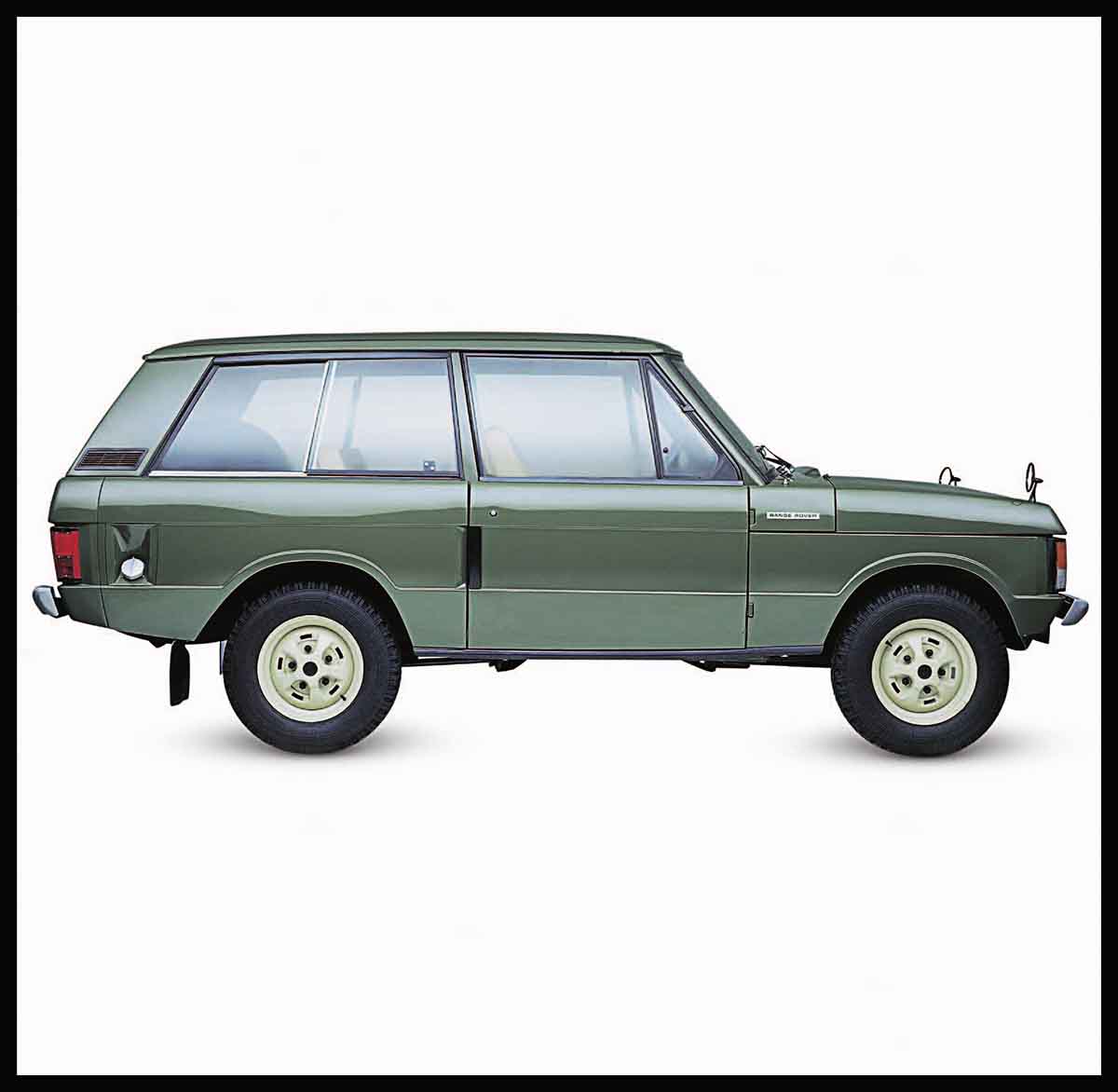Look Who’s Here!

ROBERT WAGNER says: “Being in a studio like this just Hips me. I never had anything that I got by myself before. I was always Bob Wagner’s son.”
Robert Wagner Sr. is a bigshot in the steel industry. He naturally wanted his son and heir to be a steel man. Bob was all for humoring “Dad” and he did a brief stretch in steel. But at his father’s country club (Bob’s quite a golfer himself with a 75 score), he kept meeting sueh guys as Clark Gable. Alan Ladd, Randolph Scott. Howard Keel and John Hodiak. It gave him ideas, it did. Then one night it happened. He was having dinner with his father at the Beverly Hills Hotel when agent Henry Willson saw him and sent his card over. Next day he was given a screen test at Twentieth Century-Fox and when Mr. Zanuck saw it he promptly signed him. Since his debut in “Halls of Montezuma” in 1950 he has played in five films.
“The most thrilling moment in my life,” Bob believes, “was when a hep Hollywood preview audience clapped after my G.I. shell-shock scene with Susan Hayward in ‘With a Song in My Heart.’ I got lumps in my throat.” His favorite picture to date, however, is John Ford’s “What Price Glory.” During this picture he and Dan Dailey became great pals. “Dan helps me with my scripts,” says Bob gratefully. Both boys are avid sportsmen and many of their weekends are spent at Lake Arrowhead, water skiing.
Bob’s most steady date at the moment is Debbie Reynolds. But there have been a lot of girls before Debbie and there’ll probably be a lot of girls after Debbie. For a while he went with producer Darryl Zanuck’s daughter and before that he dated Alan Ladd’s Carol Lee.
Bob lives in Beverly Hills with his parents, his sister and her two kids. He’d like an apartment of his own. And he thinks his father may suggest it soon. “I’ve been horsing around with the drums a little,” he says. “And I play records all the time. It drives my poor dad nuts.”
He has a passion for automobiles. Changes his car every six months. “So I’m losing nothing but money.” At present he has a 1947 convertible Cadillac. Before that he had a hot rod. Now he dreams of a Jaguar. He’s never so happy as when he’s tinkering with the insides of a foreign car.

JEAN HAGEN is amazed when asked, “Who dubbed the voice you used?” That was the question most often put to her on her recent publicity tour through the South and East for “Singin’ in the Rain” in which she co-starred with Gene Kelly and Debbie Reynolds.
“They didn’t believe me when I told them I did—until I gave them samples. But I finally convinced them that I was the blonde, not-so-bright movie queen whose squeaky voice was not okay for sound.”
Although she has appeared in ten films since she signed her Metro contract in 1948, Jean s fans rarely recognize her. “When I told a group of interviewers that my favorite role, before ‘Singin’ ’ was in ‘Asphalt Jungle,’ they wanted to know what part I played. I told them there were only two girl roles. And I obviously wasn’t Marilyn Monroe.”
Jean can’t remember a lime when she didn’t want to be an actress. When the family moved from Chicago to Elkhart, Indiana. Jean finished high school there, joined a theatre group and did local broadcasts. Radio on the big networks helped her finance her way through Lake Forrest College and Northwestern University. Her roommate was Pat Neal, who also had drama on her mind. They were destined to meet later oil Broadway when they appeared in “Another Part of the Forest.”
After she graduated Jean pushed on to New York. She was welcomed with open arms by the radio folk. The theatre folk weren’t so cordial. She was doing her fifth play, “The Traitor,” when she was tapped for pictures.
In July 1947 Jean married Tom Seidel, a former screen actor who is now a Hollywood agent. They have a little girl named Christine, horn in August, 1950. And come September they are expecting another blessed event. The Seidels had a most unusual honeymoon Jean broke her leg right before they were married and Tom had to carry her piggyback to the fishing streams around Montreal.
Jean is probably the only Hollywood star who has never been to Palm Springs, playground of the stars. “Is that a peculiarity?” she laughs. “Well, I think that otherwise you might call me completely normal. Except that I have rye toast and a malted every morning for breakfast.”

KIM HUNTER used to be known as Janet Cole “Janet Cole?” said David O. Selznick, the producer with the platinum touch. “Janet Cole could be anyone. From now on you’re Kim Hunter That name has glamour.”
It was a big night for her when she won the Academy Award last March 20th for her Stella in Warners’ “Streetcar Named Desire.” The statuette was presented to her later in New York. At the time Kim was playing in “The Chase” on tryout in Philadelphia. She flew to New York on the eleven o’clock plane in time to have Jose Ferrer, a last year’s winner present her with her Oscar on the stage following the premiere of “Anything Can Happen.”
Kim is living in a rarefied realm these days. The Oscar helps, but the main reason is her husband, actor Robert Emmett, whom she married last December, and with whom she is so-o-o in love. She met him when they were on tour together in “Two Blind Mice.” This is a second marriage for Kim. As she was waiting around for Mr. Selznick to begin doing something with her career (he was much more concerned at the time with the careers of Jennifer Jones and Ingrid Bergman), she married William Baldwin, a Marine. Their courtship was brief, their marriage even briefer. Their daughter Kathy was born in December 1944.
Kim’s most embarrassing moment came when she was invited to a Royal Command Performance in London (she was making a picture there at the time) after which she was introduced to the late King George and Queen Elizabeth. When she curtsied, her foot entangled in her long formal train, she stumbled forward, and clutched at the nearest support—which happened to be the hand of the Queen. “It set the Queen considerably off balance,” says Kim. “It was almost the fall of an Empire.”
Kim has wanted to be an actress since she was seven. She was a lonely child and amused herself “pretending.” She moved with her family to Hollywood and was playing in “Arsenic and Old Lace” at the Pasadena Playhouse when David Selznick signed her. Then a few years ago Mrs. Irene Selznick, ex-wife of David and now a New York play producer, entered her life and chose Kim for Stella in “Streetcar.” Since then it’s green lights for Kim Hunter.

ALDO RAY got his big chance because director George Cukor was in a stew. Cukor had “The Marrying Kind.” starring Judy Holliday, all set to roll and suddenly no leading man. Sid Caesar, a natural for the part, turned it down. Mr. Cukor, thumbing through the available male list, had an inspiration. Who was that big cocky guy with the raspy voice who played a minor but standout role in “Saturday’s Hero”? Columbia casting director Max Arnow said that his name was Aldo Da Re and that he lived in Crockett, California, and since the football picture he had played bits in “The Barefoot Mailman.” “Never Trust a Gambler” and “My True Story.” “Get him on the phone,” said Cukor.
It came as a complete surprise to Hollywood, but not to Aldo. that he became a muchly raved about star as soon as “The Marrying Kind” was released. A completely uninhibited young man, Aldo confides at the drop of a hat, “I always knew I’d be a big wheel. But I thought it would be in politics, not in pictures.”
With some reluctance Aldo gave up his job in Crockett, where he was constable. He now lives with actress Jeff Donnell and her husband. He frequently baby-sits for them and for the neighbors and can be found almost any afternoon playing football with the kids on the street. Although Aldo is separated from his wife, a Crockett girl named Shirley Green, whom he married in 1948 (a divorce is in the works), he does not run around with any of the Hollywood stars.
He is the son of Italian immigrants. When he was three his family moved to Crockett, California. He has always been interested in athletics, especially swimming and football. He received his induction notice from the Navy the day he was graduated and spent two years in the Pacific area, volunteering for the dangerous duty of “frogman.” He is the oldest of seven children. His husky voice, he claims, is a family trait. His father has it.
The studio tried to change his name to John Harrison when “The Marrying Kind” went into production, but Aldo refused to accept his new name. He just wouldn’t answer to it and insisted that his real name is Aldo Da Re. Finally he grudgingly consented to allow it to be Aldo Ray.
It is a quote. PHOTOPLAY MAGAZINE JULY 1952





No Comments